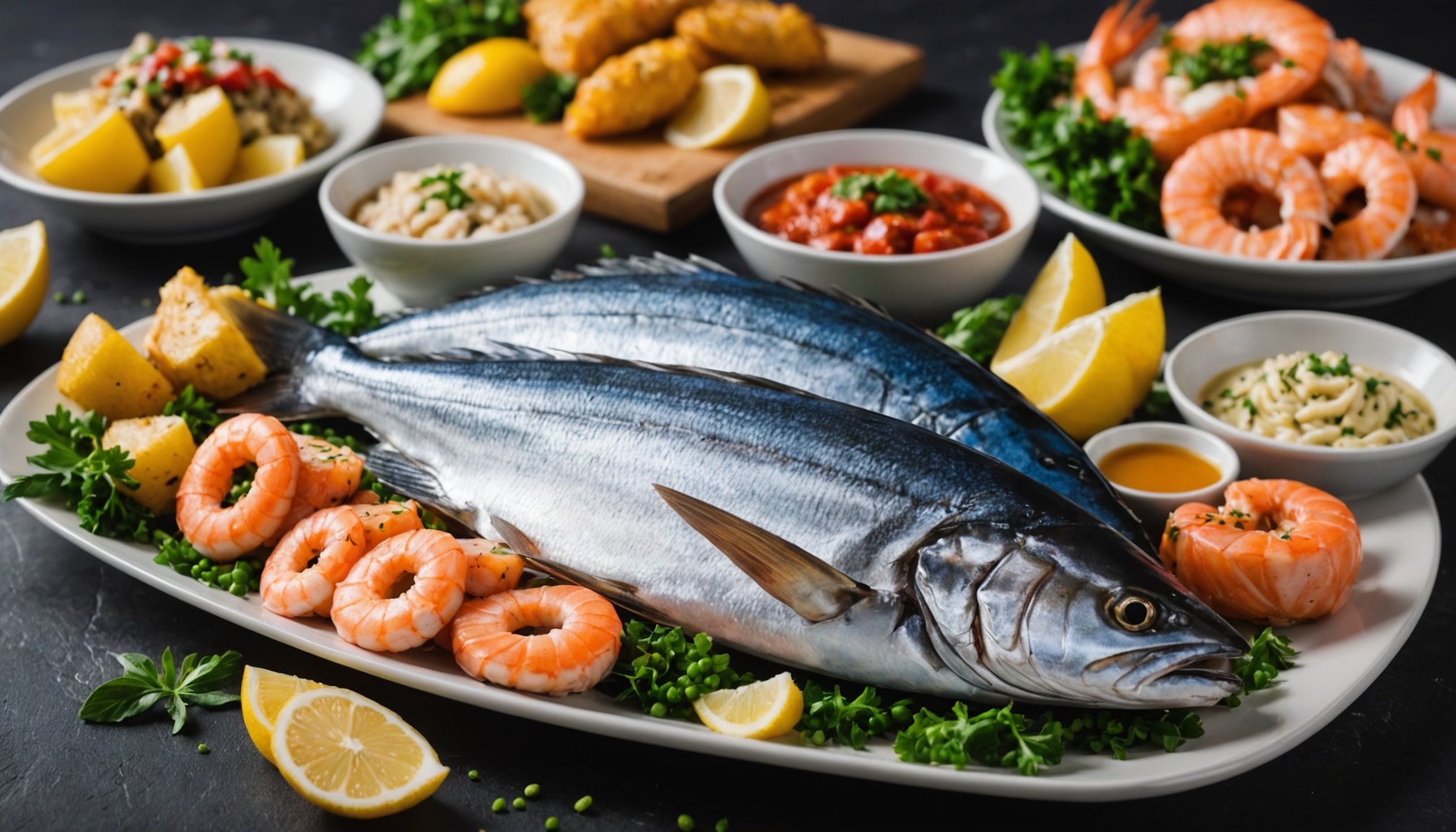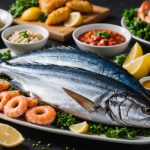Choosing sustainable seafood for your restaurant not only satisfies consumer demand but also preserves our oceans. This process involves more than just sourcing fish; it requires understanding environmental impacts, fishing practices, and certifications. By prioritizing sustainability, you enhance your menu’s appeal while supporting responsible fisheries. This guide outlines essential criteria that will simplify your decision-making and help you contribute positively to marine conservation efforts. Let's explore how to make informed choices that benefit both your business and the planet.
Understanding Sustainable Seafood
Exploring the depths of seafood sustainability and its impact.
Also to see : Discover the Top Pest Control Strategies for Your Rural Gastropub Success
Sustainable seafood refers to fish and shellfish caught or farmed in ways that consider the long-term vitality of harvested species and the well-being of the oceans. This practice is crucial as it helps maintain the ecological balance and ensures that future generations can enjoy seafood. The significance of sustainable seafood lies in its ability to support healthy oceans and marine life, which are vital for the planet's overall health.
Environmental and Ethical Considerations
Delving into the responsible practices that define sustainability.
Topic to read : Essential Elements for Designing an Engaging Sensory Garden Dining Space at Your Rural Bistro
The environmental impact of seafood harvesting is a major concern. Sustainable sourcing practices aim to minimize habitat destruction and bycatch, which is the capture of unintended species. Ethical considerations also play a role, focusing on fair treatment of workers and communities involved in the seafood supply chain.
Importance of Sourcing Practices
How sourcing shapes the future of our oceans.
The role of sustainable sourcing in seafood sustainability cannot be overstated. It involves selecting suppliers who adhere to responsible practices. This ensures that seafood is harvested at a rate that allows fish populations to replenish. By prioritizing these methods, consumers contribute to the preservation of marine ecosystems.
- Key Benefits of Sustainable Sourcing:
- Protects marine biodiversity
- Supports local fishing communities
- Promotes long-term food security
Essential Criteria for Selecting Sustainable Seafood
Navigating the standards for responsible seafood choices.
Sourcing Practices
The foundation of sustainable seafood lies in robust sourcing practices. Selecting seafood involves understanding the criteria for sustainable seafood. These criteria ensure that the seafood is harvested responsibly, maintaining ecological balance. Key seafood selection criteria include evaluating the fishing methods and ensuring minimal environmental impact. Sustainable practices often involve choosing suppliers who prioritize the health of marine ecosystems.
Certifications to Look For
Certifications play a pivotal role in identifying sustainable seafood standards. Recognized certifications such as the Marine Stewardship Council (MSC) and Aquaculture Stewardship Council (ASC) provide assurance that the seafood meets rigorous environmental and ethical standards. These certifications help consumers make informed choices by verifying that the seafood adheres to established seafood selection criteria.
Environmental Impact Considerations
Assessing the environmental impact is crucial when considering criteria for sustainable seafood. Local sourcing is important as it reduces the carbon footprint associated with transportation. Additionally, evaluating the health of the ecosystem from which the seafood is sourced ensures compliance with sustainable seafood standards. By considering these factors, consumers can support practices that protect marine biodiversity and promote sustainability.
- Key Considerations:
- Fishing methods
- Recognized certifications
- Local sourcing benefits
Traceability in Seafood Supply Chains
Ensuring transparency and accountability from ocean to plate.
The Role of Traceability in Ensuring Sustainability
Seafood traceability is crucial in maintaining transparency within the supply chain. It ensures that seafood products are sourced responsibly, supporting supply chain transparency. Traceability allows consumers to verify the origin of their seafood, promoting confidence in traceable seafood.
Tools and Technologies for Tracking Seafood Origins
Advancements in technology have enhanced seafood traceability. Tools such as blockchain and RFID tags provide real-time data on seafood's journey, from capture to sale. These technologies aid in maintaining traceable seafood by documenting critical information, such as the fishing methods used and compliance with sustainability standards.
Examples of Successful Traceability Initiatives
Several initiatives have successfully implemented supply chain transparency. For instance, the Global Dialogue on Seafood Traceability (GDST) sets international standards that promote traceable seafood. Additionally, programs like FishWise and SeaBOS are leading efforts to improve seafood traceability across the globe.
- Key Benefits of Traceability:
- Increases consumer trust
- Enhances sustainability compliance
- Supports ethical sourcing practices
By embracing these practices, the seafood industry can ensure that sustainability is upheld throughout the supply chain. This commitment to traceability ultimately protects marine ecosystems and supports responsible consumption.
Practical Tips for Implementing Sustainable Seafood Practices
Enhancing sustainability in seafood offerings through strategic approaches.
Menu Design and Planning
Incorporating sustainable seafood into your menu involves thoughtful planning. Highlighting sustainable options not only attracts eco-conscious customers but also promotes responsible consumption. When designing a seafood menu, consider seasonal availability to ensure freshness and reduce environmental impact. Use a variety of species to prevent overfishing of popular choices.
- Key Considerations for Menu Design:
- Seasonal availability
- Diverse species selection
- Highlighting sustainable options
Supplier Partnerships
Building strong supplier partnerships is crucial for maintaining a consistent supply of sustainable seafood. Choose suppliers who are certified and committed to sustainable practices. Establishing long-term relationships with these partners can enhance your restaurant's reputation and ensure a steady flow of responsibly sourced seafood.
Staff Training and Education
Educating your staff on sustainable practices is essential for successful implementation. Training sessions should cover the importance of sustainable seafood and how to communicate these values to customers. Knowledgeable staff can enhance customer experience by explaining the benefits of choosing sustainable options.
By focusing on these aspects, restaurants can effectively integrate sustainable practices into their operations, supporting both environmental and business goals.
Case Studies of Successful Sustainable Seafood Implementation
Exploring real-world examples of sustainability in action.
Overview of Successful Restaurants
Several restaurants have effectively integrated sustainable seafood into their operations, setting benchmarks for the industry. These restaurant success stories highlight innovative approaches to sourcing and menu design. For instance, a renowned seafood bistro in San Francisco revamped its menu to exclusively feature sustainable seafood. This strategic shift not only boosted customer trust but also significantly reduced the restaurant's ecological footprint.
Lessons Learned
The journey towards sustainability offers valuable insights. A key takeaway from these case studies is the importance of strong supplier relationships. Restaurants learned that choosing suppliers committed to best practices in seafood ensures a steady supply of quality products. Additionally, educating staff on sustainable practices proved crucial in effectively communicating the restaurant's values to patrons.
Recommendations Based on Successful Practices
To emulate these success stories, restaurants should consider the following:
- Supplier Selection: Partner with certified, responsible suppliers.
- Menu Innovation: Regularly update menus to reflect seasonal and diverse sustainable seafood options.
- Staff Training: Conduct training sessions to reinforce the importance of sustainability.
By adopting these strategies, restaurants can successfully implement sustainable seafood practices, aligning with environmental goals while enhancing their market appeal.
Resources for Further Learning
Expand your knowledge on sustainable seafood practices.
Industry Organizations and Certifications
Several industry organizations are dedicated to promoting sustainable seafood. The Marine Stewardship Council (MSC) and Aquaculture Stewardship Council (ASC) are pivotal in setting standards. They offer certifications that ensure seafood meets rigorous environmental criteria. These organizations provide valuable resources and guides to help consumers and businesses make informed choices.
- Key Organizations:
- Marine Stewardship Council (MSC)
- Aquaculture Stewardship Council (ASC)
- Seafood Watch
Online Courses and Workshops
For those seeking to deepen their understanding, numerous online courses and workshops are available. They cover topics ranging from seafood sustainability to practical implementation strategies. These educational programs offer flexibility and are designed to equip participants with the knowledge to support sustainable practices.
Books and Publications
A wealth of books and publications provide in-depth insights into seafood sustainability. Titles such as "Four Fish" by Paul Greenberg and "The End of the Line" by Charles Clover offer comprehensive analyses. These educational materials are essential for anyone looking to explore the complexities of sustainable seafood further.
- Recommended Reading:
- "Four Fish" by Paul Greenberg
- "The End of the Line" by Charles Clover











